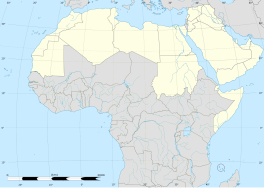
Back Pan-Arabisme Afrikaans Panarabismo AN وحدة عربية Arabic العروبه ARZ Панарабізм Byelorussian Панарабизъм Bulgarian সর্ব-আরববাদ Bengali/Bangla Panarabisme Catalan پان عەرەبیزم CKB Panarabismus Czech



| Part of a series on the |
| Arab world |
|---|
 |
Pan-Arabism (Arabic: الوحدة العربية, romanized: al-waḥda al-ʿarabiyyah) is a pan-nationalist ideology that espouses the unification of all Arab people in a single nation-state, consisting of all Arab countries of West Asia and North Africa from the Atlantic Ocean to the Arabian Sea, which is referred to as the Arab world.[1][2] It is closely connected to Arab nationalism, which asserts the view that the Arabs constitute a single nation. It originated in the late 19th century among the Arab regions of the Ottoman Empire, and its popularity reached its height during the peak of Nasserism and Ba'athism in the 1950s and 1960s. Advocates of pan-Arabism have often espoused Arab socialist principles and strongly opposed the political involvement of the Western world in the Arab world. It also sought to empower Arab states against outside forces by forming alliances such as the Arab League.[3]
- ^ Rubin, Barry (1991). "Pan-Arab Nationalism: The Ideological Dream as Compelling Force". Journal of Contemporary History. 26 (3/4): 535–551. doi:10.1177/002200949102600310. ISSN 0022-0094. JSTOR 260659.
- ^ "pan-Arabism". Oxford Reference. Retrieved 2023-07-24.
- ^ Cite error: The named reference
Continuumwas invoked but never defined (see the help page).